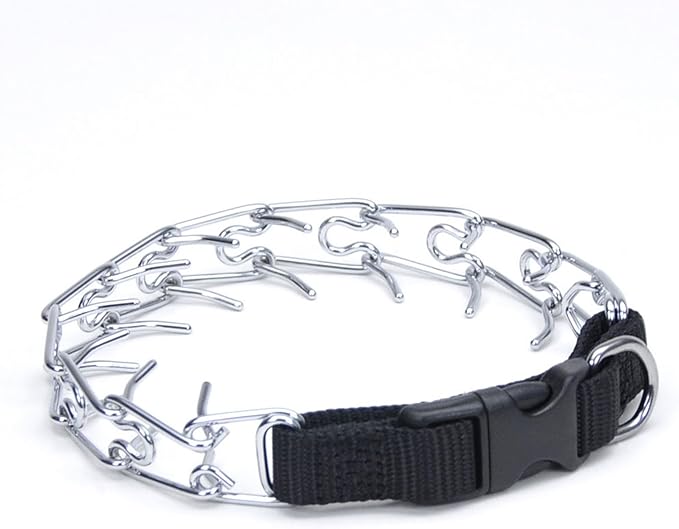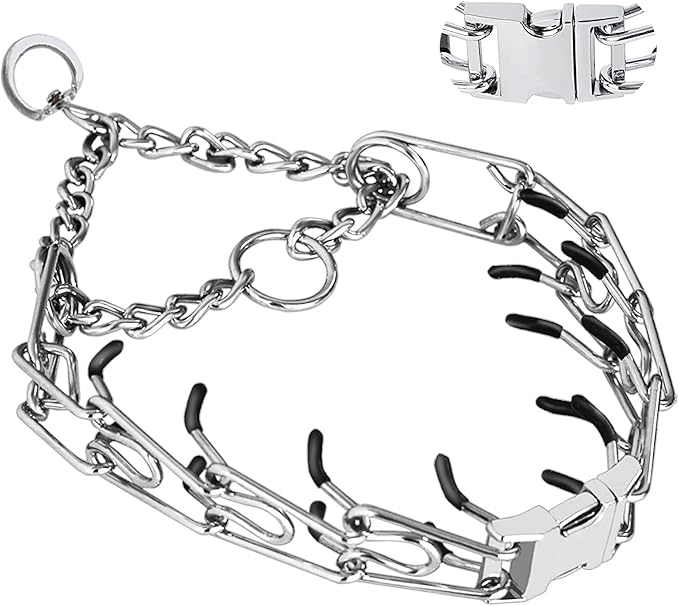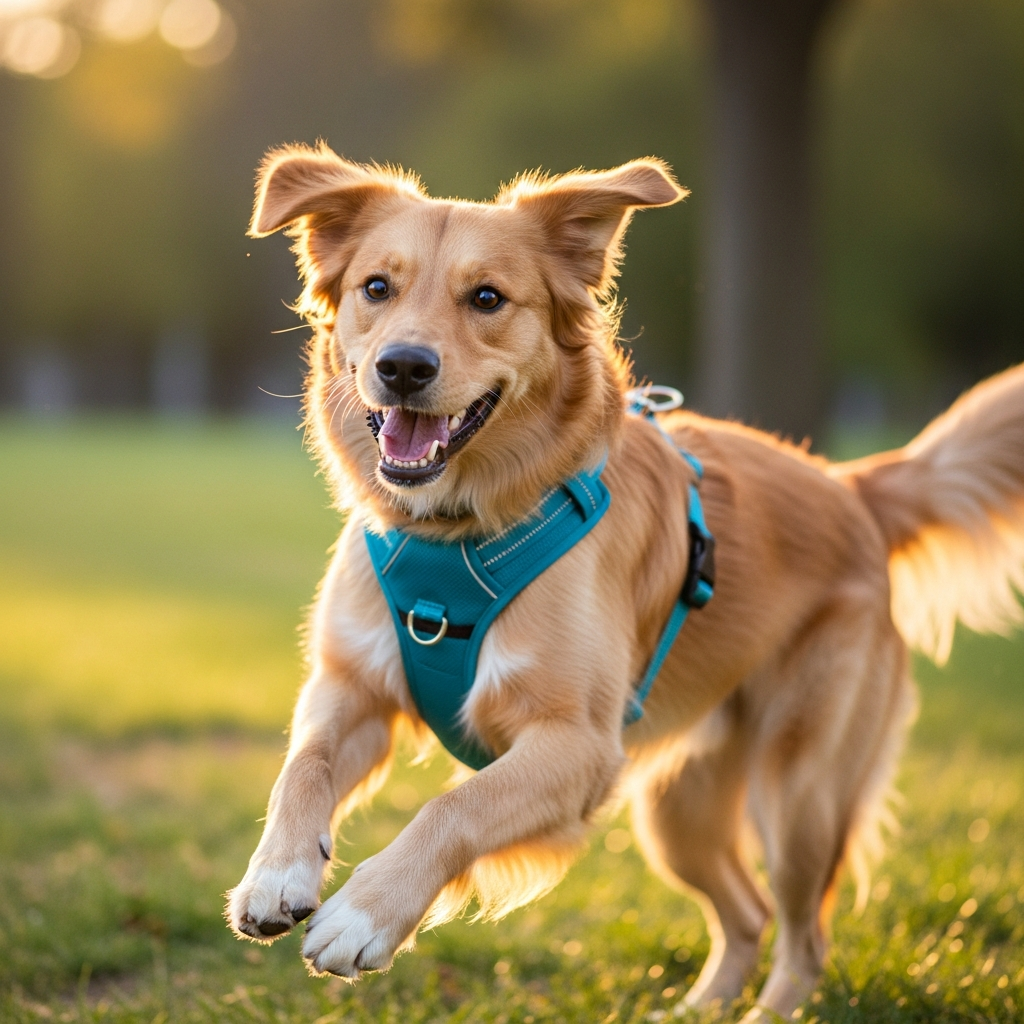If your dog frequently pulls on walks and disregards commands, it can potentially impact your bond and their safety. In such cases, prong collars may present a viable solution.
Often misunderstood, a prong collar is a metal training tool crafted to exert even pressure around a dog's neck, encouraging behavioral correction. When employed in a proper and humane manner, it simulates natural canine communication, fostering attentiveness and obedience.
Curious to discover the real functionality of this controversial tool? Let's delve into the essential truths about prong collars.
How Does a Prong Collar Work?
A prong collar, also referred to as a pinch collar, is a dog training tool comprised of interlocking metal links with rounded inward-facing prongs. When the leash is pulled taut, the collar administers uniform pressure around the dog's neck, aiming to emulate the corrective nudge a mother dog imparts to her puppies. This feedback aids dogs in comprehending boundaries and desired conduct without inflicting harm, given that it is utilized correctly. It is essential to note that prong collars should never be employed harshly or as a form of punishment; their appropriate use entails gentle correction and consistent communication.

Why Do Dog Trainers Use Prong Collars?
Dog trainers frequently opt for prong collars in particular scenarios involving reactive, large, or strong dogs, especially when traditional collars or harnesses prove ineffective in providing adequate control. These collars enable precise correction, facilitating focused behavior training for both the trainer and the dog, while minimizing continual pulling or tension. When utilized under supervision, a prong collar can lessen frustration and enhance outcomes in obedience training. In certain instances, trainers have observed that prong collars contribute to expedited and clearer communication compared to flat collars or no-pull harnesses.

Are Prong Collars Safe or Harmful?
The safety of prong collars hinges entirely on their utilization. When appropriately fitted (positioned high on the neck behind the ears) and employed with a short leash and gentle correction, prong collars do not pose a risk of injury. The prongs are blunt, not sharp, and are crafted to evenly distribute pressure. Nonetheless, improper usage—such as forcefully yanking the leash, leaving the collar unattended, or utilizing it on puppies—can instigate harm or distress. This is why numerous experts emphasize the necessity for prong collars to be introduced by professionals and strongly discourage their use as a punitive tool. Similar to any tool, the outcome is contingent upon how it is wielded.
In conclusion, when employed correctly, prong collars can be a humane, safe, and efficacious training aid for specific dogs. It is always advisable to seek guidance from a professional trainer before incorporating their use.

Cindy Long is the Sales Manager of Raysunpets and a pet lover with over 12 years of experience in exporting pet products. She specializes in providing customized dog chest carriers, leashes and pet accessory solutions for the European and American markets, always focusing on the real needs of customers and pets, and is committed to creating high-quality, practical and comfortable products that allow fur kids to live happier lives.


